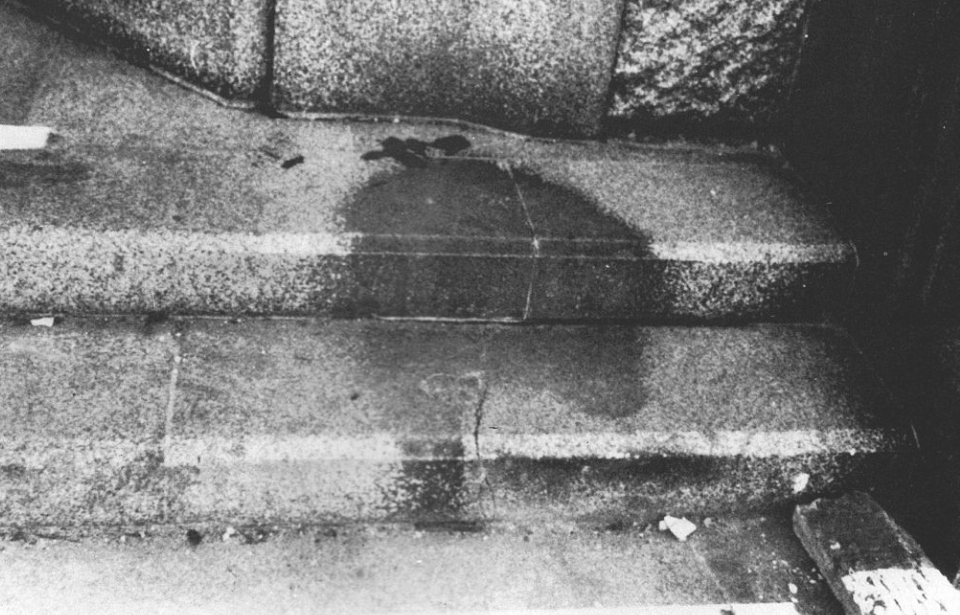When the first atomic bomb was dropped on Hiroshima on August 6, 1945, no one realized the immediate catastrophic impact it would have. Some of the most haunting reminders of the devastating loss of life in Hiroshima and Nagasaki are the nuclear shadows etched on buildings and sidewalks. These nuclear shadows are outlines from window panes, valves, and people, representing how quickly human life can be obliterated.
The bombing of Hiroshima and Nagasaki
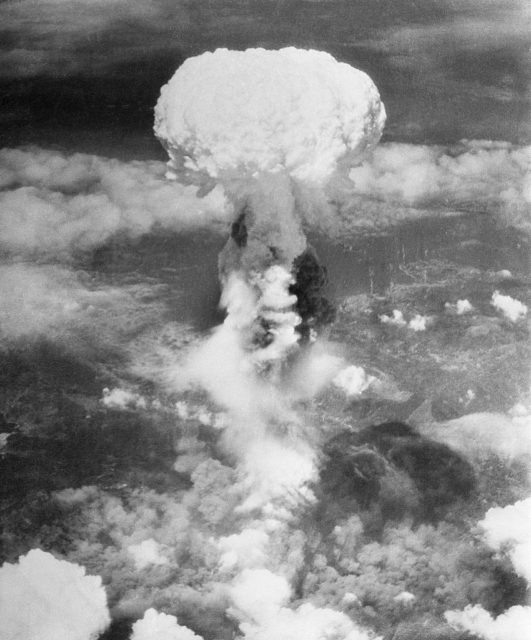
By 1945, the United States considered invading Japan to end the Second World War. Despite Germany being defeated in May 1945, Japan made it clear they would continue fighting to the very end in the Pacific – no matter the cost of human life.
American military commanders worried that an American invasion of Japan could potentially result in one million American casualties. President Truman opted to use the atomic bomb that scientists had developed through the Manhattan Project. Truman hoped that the atomic bomb would bring the War in the Pacific to a quick end.
On August 6, 1945, the “Little Boy” atomic bomb was dropped on the Japanese city of Hiroshima. Hiroshima was an industrial city with several military units located nearby. Five square miles of the city were destroyed. The explosion killed an estimated 80,000 people immediately. This death toll would rise to upwards of 200,000 people after tens of thousands more died later of radiation exposure.
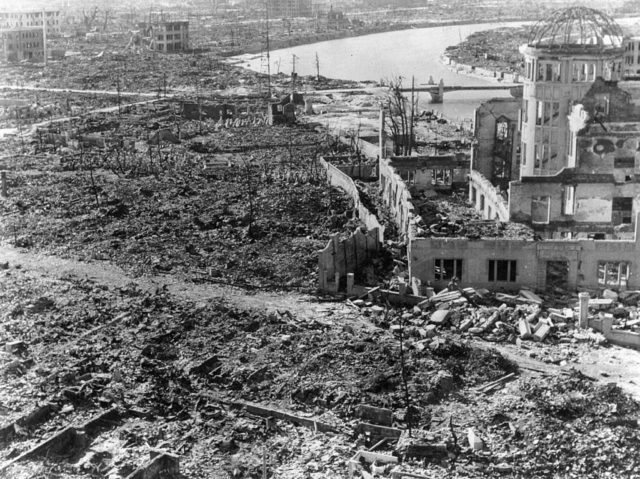
Despite its utter devastation, the bombing of Hiroshima failed to lead to Japan’s immediate surrender. On August 9, 1945, three days after the atomic bomb was dropped on Hiroshima, American troops dropped the bomb “Fat Man” on the city of Nagasaki. Two and a half square miles of Nagasaki were flattened. An estimated 40,000 people were killed instantly, with the death toll eventually rising to over 100,000 people.
Japan surrendered on August 15, 1945. Despite this surrender, Japan had lost an unprecedented number of people from the two atomic bombs. The Hiroshima shadows serve as a constant reminder of this loss of life.
What are the Hiroshima shadows?
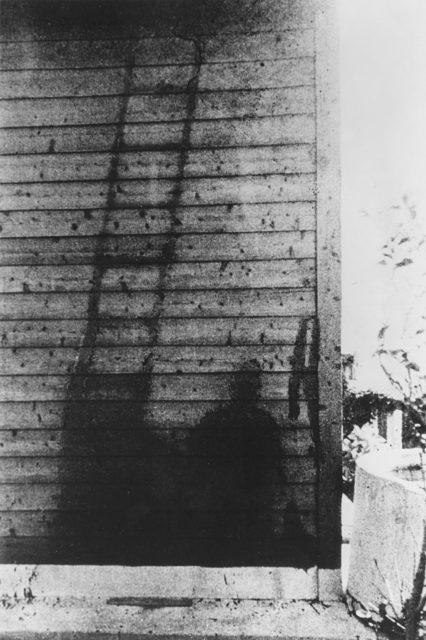
Nuclear shadows were present in both Nagasaki and Hiroshima. Of the two cities, the Hiroshima shadows gained worldwide recognition as a symbol of the innocent lives lost in this act of war.
The Hiroshima shadows are black shadows of objects or human bodies that were found on sidewalks and buildings throughout Hiroshima. Any object that was in the way of the blast became imprinted on its background.
The case of the Sumitomo Bank “death figure” shadow
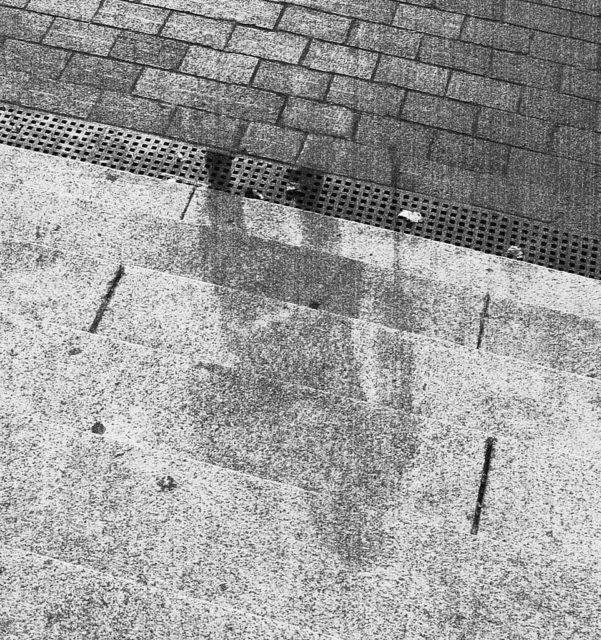
One of the most famous Hiroshima shadows was found at the Sumitomo Bank, located only 850 feet away from the blast’s epicenter. This shadow is one of the most complete outlines left behind. The shadow clearly shows a person sitting on the bank steps, waiting for the facility to open. It is believed that this person had no possible escape and was killed instantly by the blast.
The Sumitomo Bank was not totally destroyed in the bombing of Hiroshima. It reopened again after the end of the war, with its entrance soon becoming a notable landmark because of the nuclear shadow on its front steps. The nuclear shadow at Sumitomo Bank is also known as the “death figure.” It became the second most famous atomic sight, after the Atomic Bomb Dome.
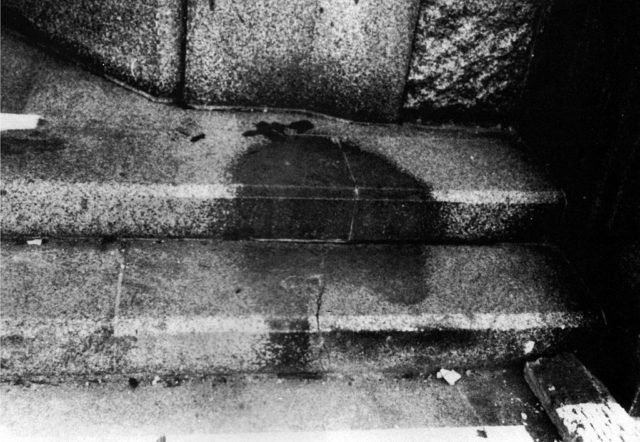
The Hiroshima shadow on the steps of the Sumitomo Bank remained in place for over 20 years. While the bank was open, they took measures to preserve the shadow on their front steps. These measures included erecting a fence around the steps and covering the shadow with glass to prevent further deterioration. In 1971, the Sumitomo Bank in Hiroshima was due for a rebuild. The front steps with the shadow were cut out and donated to the Hiroshima Peace Memorial Museum, where they reside today, surrounded by glass to preserve the imprint.
Since the steps were moved to the Hiroshima Peace Memorial Museum, many people have claimed to know the identity of the individual sitting on the steps of the Sumitomo Bank. Ultimately, however, the identity of this person remains unknown. Conflicting stories make it difficult to know for sure who this person was.
How are nuclear shadows created?
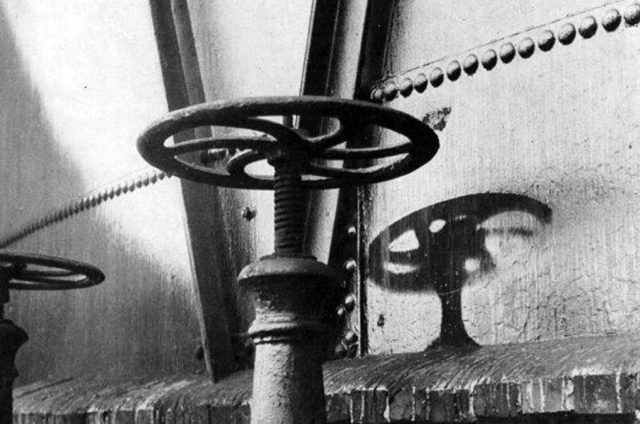
It is hard to comprehend that shadows in Hiroshima show a person’s last moments. It is nearly unfathomable that someone’s final moments are etched onto such commonplace items, like stairs and walls, for others to walk past every day. Understanding how Hiroshima shadows came to be might help us rationalize these intimate impressions a little better.
Dr. Michael Hartshorne explains how nuclear shadows are created. Dr. Hartshorne is an emeritus trustee of the National Museum of Nuclear Science and History in Albuquerque, New Mexico, and a professor emeritus of radiology at the University of New Mexico School of Medicine. Dr. Hartshorne explains that when the bomb over Hiroshima exploded, an intense light and heat spread out from the point of implosion.
Any object or person in this path of heat and light acted as a shield for objects behind them by absorbing the light and energy. The surrounding area was bleached, thus creating the “shadows” evident on the ground, walls, and stairs in Hiroshima.
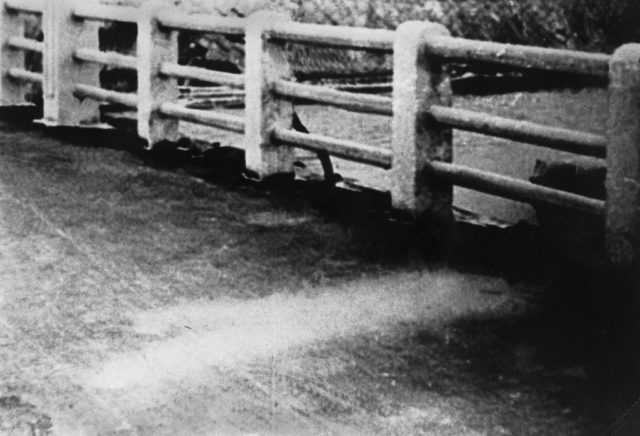
In other words, the darker shadow impressions are how the surface looked before the atomic bomb was dropped. The surface area around the object or person was bleached and lightened from the blast, making the colored area appear to be a darker shadow.
It is common for nuclear shadows found at Nagasaki and Hiroshima to eventually fade away. Because they are outside, nuclear shadows are subject to the elements, including wind and rain, which will play a role in the erosion of the shadows. Nuclear shadows found in Nagasaki and Hiroshima have vanished after several years because of the elements.
A Hiroshima shadow went viral, but it wasn’t real
You may see this picture being shared the coming days with the claim it shows a Hiroshima shadow.
Although there are real Hiroshima "shadows", this is not one of them.https://t.co/AekfVwolmoIt is an art piece called 'Innocent Shadow' made by Mark Slone;https://t.co/0vsfZjlivi pic.twitter.com/vgvLAWTT76
— Fake History Hunter (@fakehistoryhunt) August 4, 2020
A few years ago, a photo of a supposed Hiroshima shadow went viral on social media platforms. The photo was a picture of a shadow of a young girl jumping rope. People on social media believed this was a real example of a Hiroshima shadow.
The picture in question is actually an art piece titled “Innocent Shadow,” created by artist Mark Slone.
More from us: Tsutomu Yamaguchi: The man who survived Hiroshima and Nagasaki
The inspiration for this art piece was taken from real nuclear shadows found at Hiroshima and Nagasaki, though this photo is not an actual nuclear shadow. Though this piece of art is very haunting, the issue is that people took it as a real Hiroshima shadow. Thus, some felt that it was pushing a false narrative.
